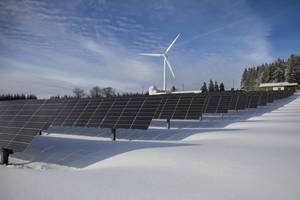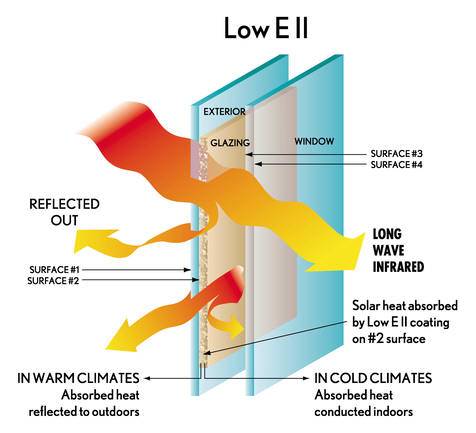What Wikipedia Can’t Tell You about LED Replacement Bulbs
Performance and technology behind LED replacement bulbs are continuously improving. At the same time, prices are going down, which makes LEDs an affordable solution for many homeowners.
Did you know that traditional (incandescent) light bulbs are actually electric space heaters that give off light only as a by-product?
Simply because of the habit of buying the same new light bulb as always, people tend to tolerate their inefficiency, wasting more than 90% of the power they consume.
Got it? Great, let’s dig in.
When comparing purchase price only, LED replacement bulbs are still far more expensive than traditional incandescent bulbs. To get the full picture, you'll need to calculate the running costs as well:
- The costs of maintenance - When using LEDs, this means less time spent climbing ladders to replace bulbs installed in "hard to reach" places or high ceilings.
- The costs of energy consumed - When using LEDs, this means more energy converted to light rather than heat.
Carefully chosen LED replacement bulbs can be a great alternative both in terms of energy-saving and light quality. In general, LED retrofit lamps can easily replace any conventional 40 - 75 Watt incandescent bulbs.
First, let's see how a traditional, incandescent bulb works and why it is so inefficient:
Incandescent Bulbs: How They Work
The light bulb works on a very simple principle: every piece of metal glows when it is heated. The only problem is that it has to be heated up a lot!
That is also why incandescent bulbs are so inefficient - most of the energy they consume is turned into heat.
Electricity comes into a light bulb via the bulb's base and goes through a wire leading to a piece of tungsten. The tungsten is curled and very thin to maximize resistance in the wire. When electricity meets resistance, it heats the resistor.
The tungsten has a very high melting point. Therefore, it glows quite brightly when it reaches about 4500° Fahrenheit (2482° Celsius), which is quite hot.
The tungsten is enclosed in a bulb for a good reason. It not only protect people and objects from the hot tungsten, but it also keeps oxygen away from the hot metal, which would make it burn up immediately. In addition, the bulb is usually filled with a low-pressure, inert gas such as argon.
Replacing a bulb is an easy matter of simply unscrewing a light bulb, then putting in a new one. (It is best if the switch is turned off when changing a bulb.) However, replacing a light fixture can be a more complicated process.
3 Things to Consider When Buying LED Replacement Bulbs
- Lumens - This is the first thing to look for when choosing an LED. The higher the lumen rating - the brighter the bulb. For example, a 60-watt incandescent bulb gives out around 800 lumens, while LED replacement bulbs can give the same brightness at only 10 watts.
- Color Temperature - This is the second thing to check when choosing LED. Lower values give warmer light; for example, values between 2700 - 3000 K will deliver "warm white" that is closest to incandescent light. Higher color temperatures like 5000 K will give a cold white, which is blueish like "stark trek" light.
- Lumens per Watt - Wattage of a bulb in combination with Lumens gives you an estimate of how efficient an LED bulb is. If you divide the number of Lumens declared on an LED bulb with the number of Watts it consumes, you can easily see what you are buying.
LED Replacement Bulbs and Energy Savings
LED lighting is a very efficient technology in terms of power consumption. Comparing to incandescent lighting, LEDs use at least 70% less energy and last > 20 times longer. For example, LED lamps are expected to last 25,000 to 50,000 hours. On the other hand, a conventional incandescent lamp lasts only about 1,000 hours, while a CFL lasts from 8,000 to 10,000 hours.
You can usually replace the conventional 60-watt incandescent bulb with a single 10 Watt LED retrofit. Potential savings can be huge. For each hour the lamp is running, you are saving 50 Watts of electricity. It means that if you replace a bulb that is running 10 hours a day, you could be saving 500 Watt/Hours per day, which is 15 KiloWatt hours saved per month.
Multiply that with the number of LED replacement bulbs you will need to install - see how easy it is to save up to 90 KW/h each month - that's more than 1 Mega-Watt hour per year!
Benefits of LED lights and Basic LED Characteristics
- Very long life - 20 times longer compared to incandescent
- Clean technology, does not contain mercury
- No ultraviolet or infrared emissions
- Resistance to vibrations and breakage
- Compact size and easy maintenance
- Works in cold temperatures
- Low energy consumption
- Instant-on performance
- Dimmable options exist
Now on to you - let us know your opinion, experience, or questions regarding the installation of LED Replacement Bulbs in the comments section below.



